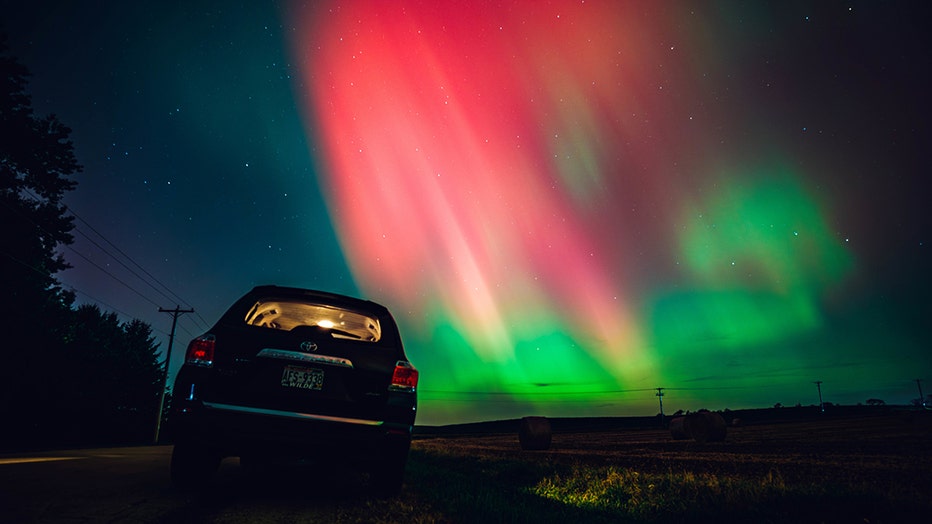Northern Lights forecast: Some US states could view aurora borealis for New Year's
Times Square gears up for New Year's Eve
As 2024 is coming to an end, final preparations are in full swing for New Year's Eve festivities in Times Square, as police implement public safety measures. NYC Mayor Eric Adams and NYPD Commissioner Jessica Tisch made public safety announcements ahead of New Year's Eve. FOX 5's Robert Moses joined LiveNOW from FOX with the details.
It’s possible that some northern U.S. states could again get the chance to see the Northern Lights as the world rings in 2025.
The sun expelled two bursts of plasma that are hurtling toward Earth and were expected to arrive early this week, according to the U.S. National Oceanic and Atmospheric Administration (NOAA).

FILE - The night sky in Wisconsin glows with the Northern Lights as a geomagnetic storm brings vibrant pink and green colors to a majority of the northern states on Oct. 10, 2024. (Photo by Ross Harried/NurPhoto via Getty Images)
Here’s what to know:
Aurora borealis Northern Lights forecast
NOAA’s Space Weather Prediction Center (SWPC) rates solar storms on a five-level scale, with five being the most extreme and rarest space weather conditions.
Strong, Level 3 out of 5, geomagnetic storms were possible on Tuesday, and minor Level 1 storming is forecast for New Year's Day. However, space weather forecasters were considering upgrading the watch to a Level 2, according to FOX Weather.
"SWPC forecasters have a fair level of confidence in some measure of Earth effectual components and general timing windows of these two particular CMEs, however, as is usual with these events, intensity is less certain," the SWPC said. "We will not know the true potential of geomagnetic disturbance levels of response until the CME(s) arrive 1 million miles from Earth (when they will be about 30-60 minutes from reaching our planet) and their structure and intensity can be measured by our solar wind observatories - NOAA DSCOVR and NASA ACE spacecraft."
The early morning hours on Tuesday were expected to have the best chance of producing a light show, NOAA space weather forecaster Shawn Dahl said.
But skywatchers in some areas may get a second night to see the aurora borealis on Jan. 1.
What states could see the Northern Lights?
Once they arrive, they could spark colorful auroras on Tuesday night in Alaska, Washington, Montana, North Dakota, South Dakota, Minnesota, Wisconsin, Michigan, New Hampshire, Vermont and Maine.
Parts of Oregon, Idaho, Wyoming, Iowa and New York may also get a piece of the view.
How to view the Northern Lights
To see the dazzling display, wait for clear skies to get dark and then go outside, ideally away from bright city lights.
Taking a picture with a smartphone camera may also reveal hints of the aurora that aren’t visible to the naked eye.
Northern Lights more frequent – here’s why
The sun is at the maximum phase of its 11-year cycle, making solar surges and northern lights more frequent.
The active period is expected to last for at least another year, though scientists won’t know when solar activity peaked until months after the fact.
NOAA is monitoring this week’s solar storms for possible minor disruptions to high-frequency radio communications, which are used by airlines and amateur radio operators.
In May, NOAA issued a rare severe geomagnetic storm warning — it was the strongest storm in more than two decades, producing light displays across the Northern Hemisphere. And in October, a powerful solar storm dazzled skygazers far from the Arctic Circle when auroras appeared in unexpected places, including Germany, the United Kingdom, New England and New York City.
The Source: <i>This story was written based on information shared by NOAA’s Space Weather Prediction Center (SWPC) and NASA. It was reported from Cincinnati, and FOX Weather and the Associated Press contributed.</i>

